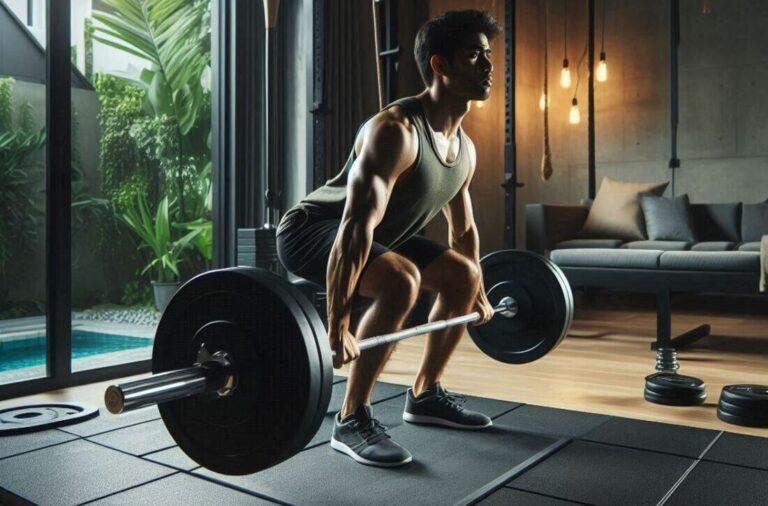Imagine you have carved out a dedicated space, invested in eco-friendly fitness equipment, and you’re ready to create a haven for sustainable sweat sessions.
But wait – what’s underfoot?
For a truly eco-conscious home gym, the foundation – your flooring – matters too.
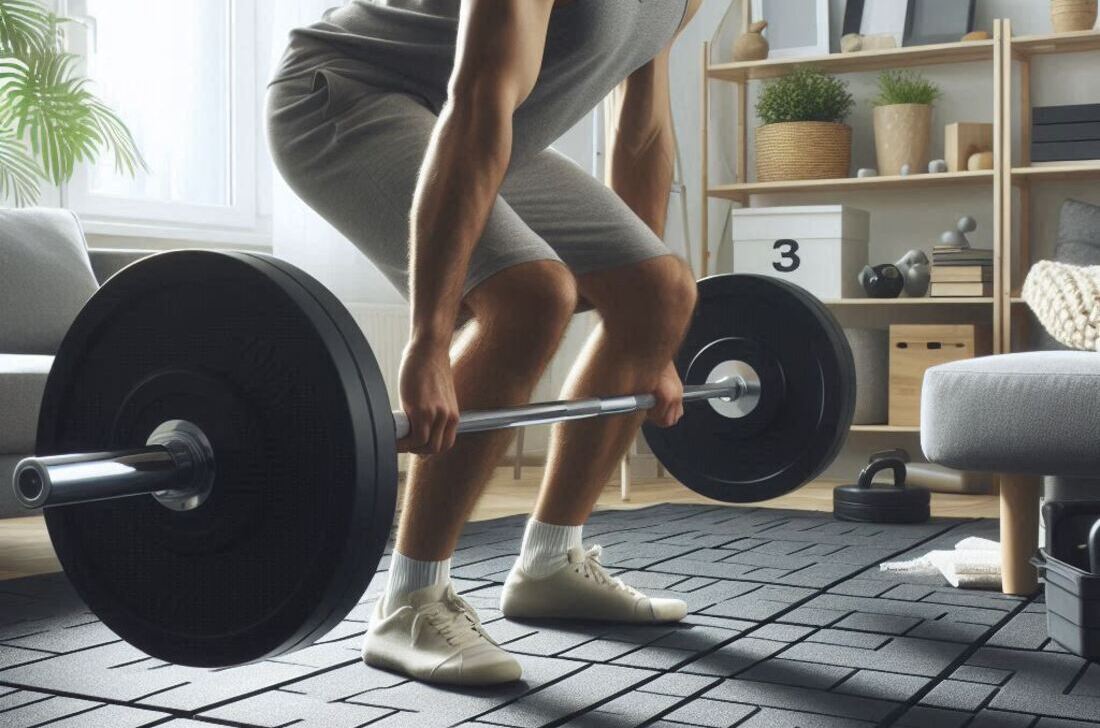
Traditional gym flooring options often involve synthetic materials with potentially harmful environmental impacts.
There are sustainable solutions waiting to elevate your home gym, both in terms of functionality and environmental responsibility.
This comprehensive guide dives into the world of eco-friendly home gym flooring.
We’ll explore sustainable materials, responsible manufacturing practices, and key considerations to make an informed decision that aligns with your fitness goals and the planet’s well-being.
Why Choose Sustainable Flooring for Your Home Gym?
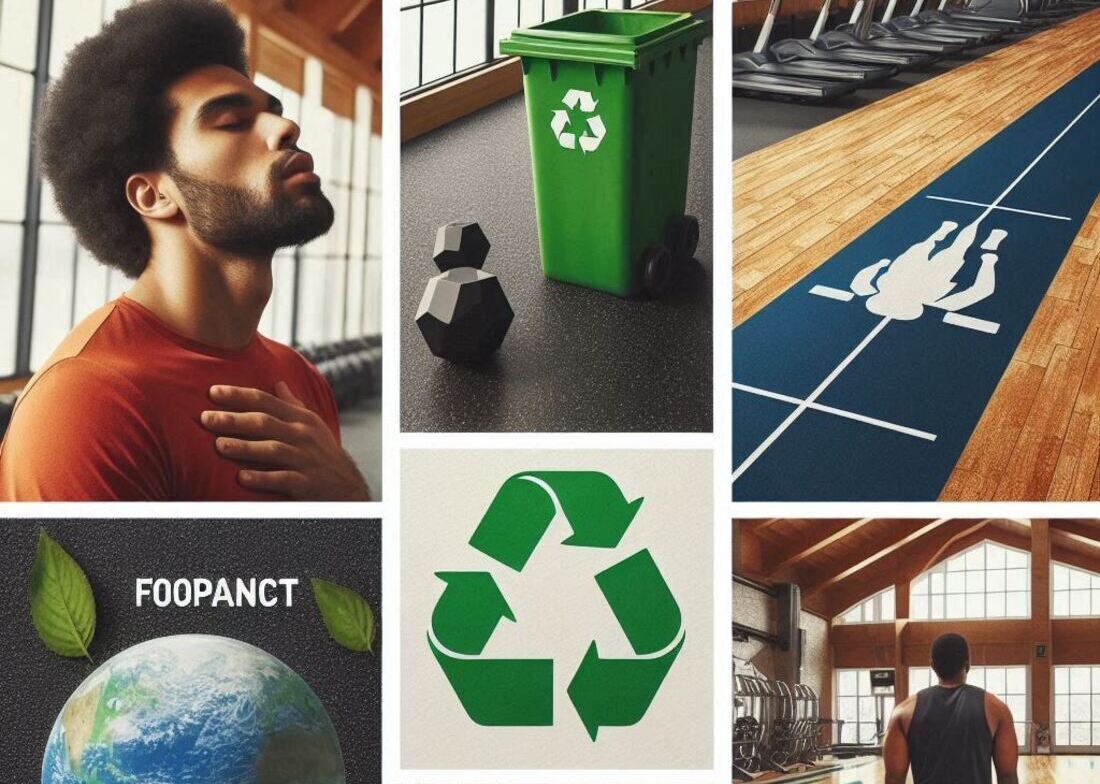
Here are some compelling reasons to embrace sustainability when choosing your home gym flooring:
- Reduce Environmental Footprint: Sustainable materials often come from recycled sources or renewable resources, minimizing your impact on the planet.
- Promote Healthy Living: Eco-friendly flooring options can be free of harmful chemicals, creating a healthier environment for you to breathe and workout in.
- Invest in the Future: By choosing sustainable materials, you contribute to a more responsible future for the fitness industry and society as a a whole.
- Long-Term Value: Sustainable flooring options are often designed for durability and longevity, reducing the need for replacements and associated environmental costs.
Key Takeaways on Sustainable Gym Flooring Benefits
- Reduces your environmental impact through responsible material choices.
- Promotes a healthier workout environment with potentially fewer chemicals.
- Supports a more sustainable future for the fitness industry.
- Offers long-lasting durability for long-term value.
Now that you’re ready to explore eco-friendly options, let’s delve into some of the top sustainable flooring choices for your home gym:
Sustainable Home Gym Flooring Options
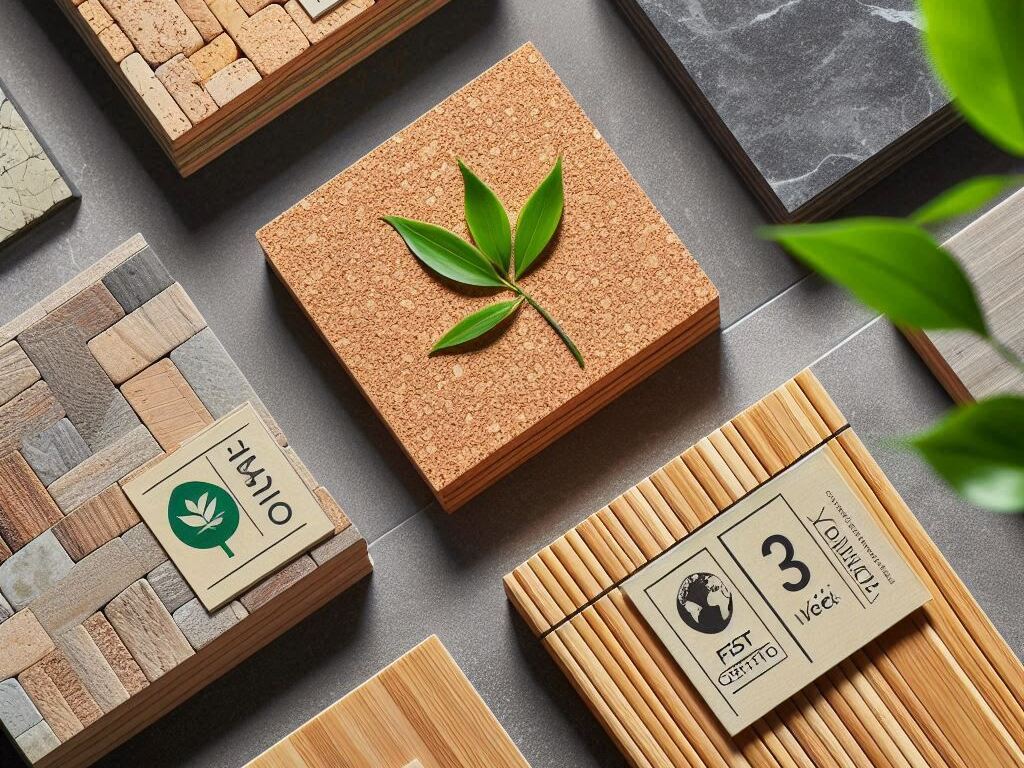
(Note: Affiliate Links)
- Recycled Rubber Tiles: Made from recycled car tires or other rubber products, these tiles offer durability, impact absorption, and a reduced environmental footprint.
- Cork Flooring: This naturally renewable resource provides excellent sound absorption and a comfortable surface for low-impact workouts. Look for FSC-certified cork flooring to ensure responsible sourcing. [Forest Stewardship Council]
- Bamboo Flooring: A fast-growing and renewable resource, bamboo offers a beautiful aesthetic and some level of durability. However, choose FSC-certified bamboo to ensure sustainable harvesting practices.
- Linoleum Flooring: Made from natural materials like linseed oil, cork, and wood flour, linoleum is a durable and naturally anti-bacterial option. Opt for water-based sealants for a healthier choice.
- Sustainable Engineered Wood: Look for engineered wood products with Forest Stewardship Council (FSC) certification, ensuring responsible wood sourcing and minimizing environmental impact.
Table 1: Comparison of Sustainable Home Gym Flooring Options
| Material | Pros | Cons | Ideal Use |
|---|---|---|---|
| Recycled Rubber Tiles | Durable, impact absorption, eco-friendly | May have a rubber odor initially | General gym use, weightlifting (lighter weights) |
| Cork Flooring | Comfortable, sound absorption, renewable resource | Less durable, requires maintenance | Yoga, bodyweight exercises, low-impact cardio |
| Bamboo Flooring | Beautiful aesthetic, renewable resource | Requires careful maintenance, may not be as durable | Low-impact workouts, stretching |
| Linoleum Flooring | Durable, naturally anti-bacterial | Can be more expensive | General gym use, functional training |
| Sustainable Engineered Wood | Eco-friendly, aesthetically pleasing | Requires maintenance, less impact absorption | Low-impact cardio, stretching |
Note: This table is a general guide, and specific products within each type may have varying features.
Important Considerations Before Choosing Sustainable Gym Flooring
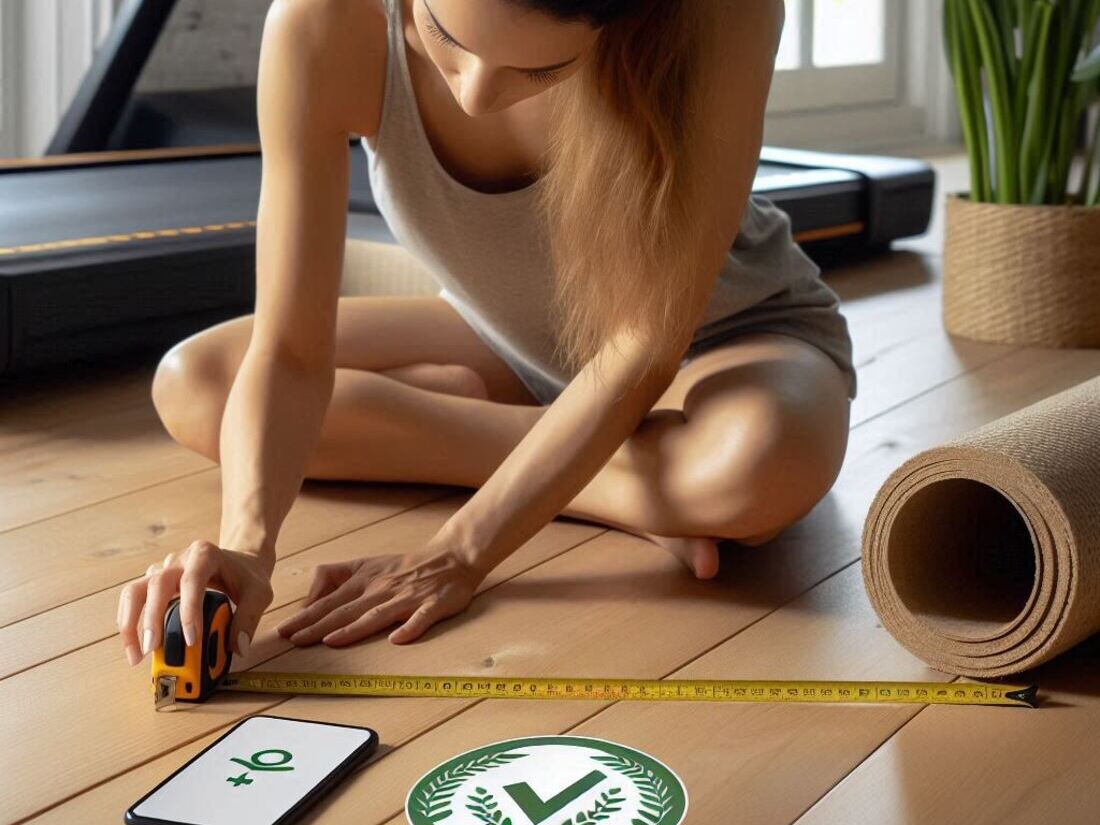
While sustainable flooring offers numerous benefits, here are some factors to keep in mind before making your final decision:
- Performance Needs: Consider the type of workouts you’ll be doing. High-impact activities like weightlifting might require more durable options like recycled rubber tiles, while low-impact workouts can benefit from materials like cork or bamboo.
- Maintenance Requirements: Sustainable materials can vary in maintenance needs. Linoleum or engineered wood might require occasional refinishing, while rubber tiles might simply need regular sweeping and mopping.
- Durability: Evaluate the long-term viability of the chosen material for your exercise style. While some sustainable options like cork excel in comfort, they may not be ideal for heavy weights.
- Cost: Sustainable flooring options can range in price. Recycled rubber tiles might be a cost-effective option, while cork or FSC-certified bamboo can be more expensive.
- Aesthetics: Don’t underestimate the visual appeal of your gym floor! Consider the overall aesthetic you desire and choose a material that complements your space.
Life Cycle Assessment and Certifications
Look for flooring options with a low life cycle assessment (LCA).
This assesses the environmental impact of a product throughout its entire lifespan, from material extraction to disposal.
Certifications like Forest Stewardship Council (FSC) for wood products or FloorScore for low-chemical emissions can further guide your eco-conscious choice.
FAQs: Frequently Asked Questions About Sustainable Home Gym Flooring
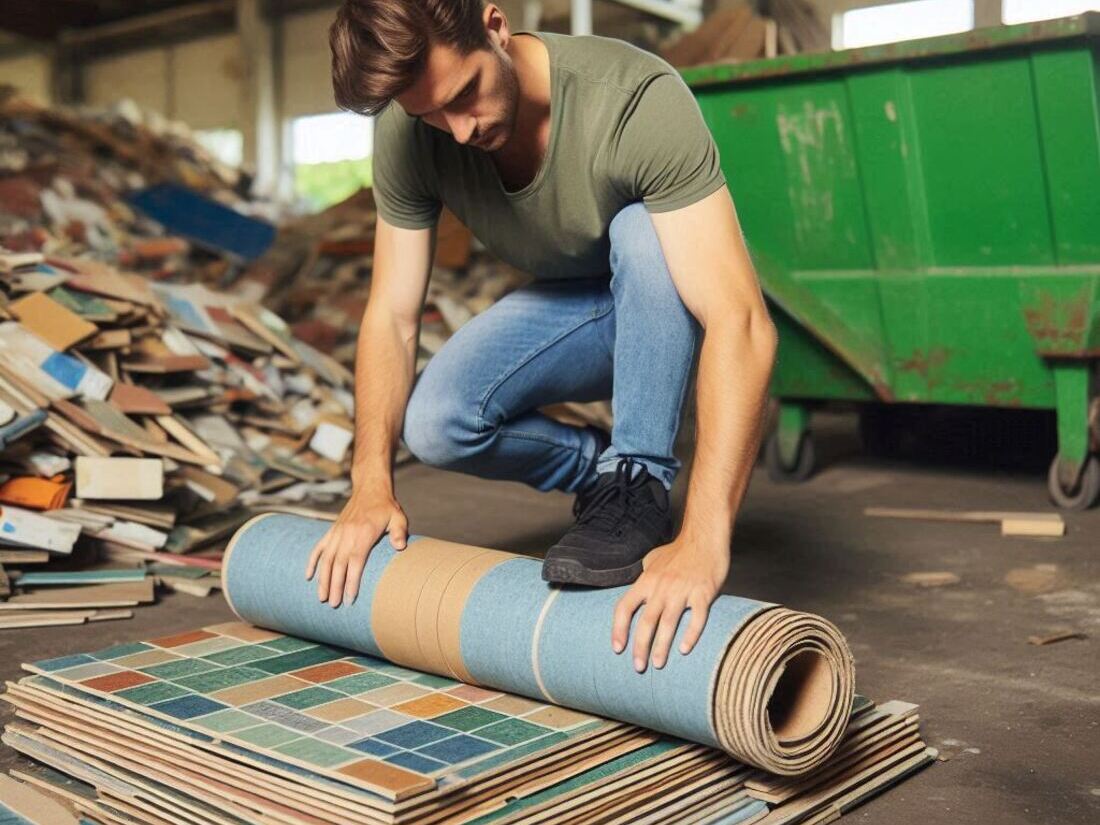
Is sustainable flooring always more expensive?
Not necessarily. While some eco-friendly options like FSC-certified wood can be pricier, recycled rubber tiles offer a cost-effective and sustainable solution.
Are sustainable flooring options safe for my health?
Many sustainable materials prioritize natural ingredients and minimal chemical use. Look for certifications like FloorScore for low-emission flooring, creating a healthier environment for your workouts.
Where can I buy sustainable home gym flooring?
Eco-friendly flooring options are becoming increasingly available. You can find them at specialty flooring stores, online retailers with sustainability filters, and eco-conscious fitness equipment stores.
How can I dispose of old gym flooring in an eco-friendly way?
Many recycling centers accept rubber tiles or cork flooring for responsible disposal. Check with your local recycling program for specific guidelines on responsible disposal of your existing flooring.
Conclusion: Building a Sustainable Home Gym Starts with the Floor
By choosing sustainable flooring for your home gym, you’re making a positive impact on the environment without sacrificing functionality.
Consider your workout style, budget, and desired aesthetics to find the perfect eco-friendly fit for your home fitness haven.
Remember, small changes in material choices can lead to a big impact on the planet’s well-being.
Bonus Tip
Pair your sustainable flooring with other eco-conscious choices in your home gym, such as energy-efficient lighting or recycled workout equipment. Every step towards sustainability counts!
Happy (and eco-friendly) training!


